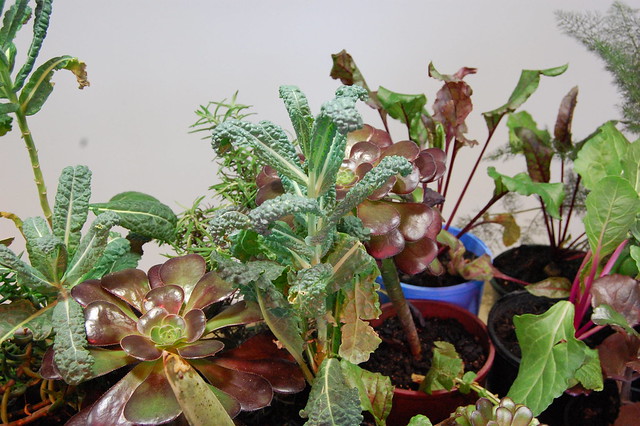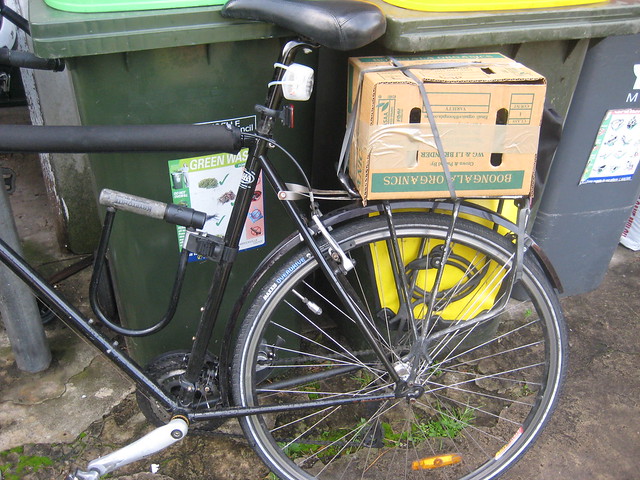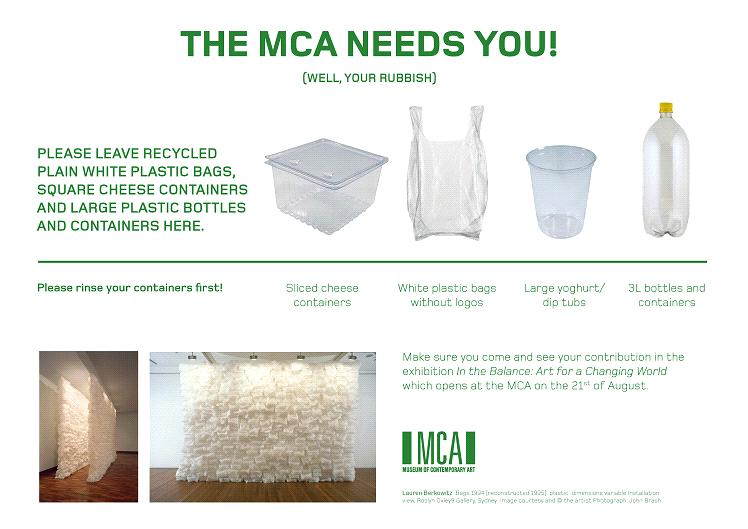
Lauren Berkowitz, detail from Sustenance, late Sept 2010, MCA.
The following is a guest contribution, from Lucy, who works as a Visitor Services Officer (VSO) at the MCA. VSOs work from 10am to 5pm each day, and rotate throughout the museum every half hour. I think they represent a massive untapped resource of information about the way that artworks operate. Artists make the work; curators choose it, place it, write about it; gallery-goers experience it briefly when they visit. But nobody spends as much time with the work as the VSOs.
The MCA tends to employ artists, and sometimes art students, as VSOs. Thus, these gallery invigilators are far from “public servants” who perform a mechanical function of surveillance. Rather, the VSOs, while they are watching to make sure nothing goes awry, and writing reports on mishaps, are also thinking deeply about what is the role of art, and how particular artworks function in practice (rather than in the ideal space of the artist’s studio, or the utopian zone of the exhibition catalogue).
And so it is with Lucy, who has penned this thoughtful response to three artworks which are part of the In the Balance exhibition, each of which use plants in a different way.
Here is her guest blog:
Continue reading



